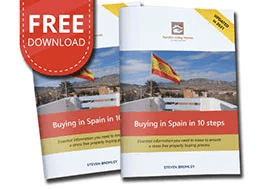Article #47: How to Pay for a Property Abroad: A Practical Guide for British Buyers

Thinking of buying a home overseas? Here’s how to pay for it the smart way.
When you’re searching for that perfect villa, finca or lock-up-and-leave holiday home abroad, the excitement can easily take over. And rightly so — in many countries your British pound stretches much further than it does at home. But once you’ve found “the one”, the big question arrives: how do you actually pay for it?
The good news is that the process isn’t wildly different from the UK. Yet there are important differences in legal requirements, fees, taxes and, most importantly, how currency exchange can affect what you pay. A little planning here can save you thousands.
Let’s walk through your main options in a friendly, straightforward way — exactly how we explain it to our clients in the Hondón Valley.
Start with an independent financial adviser
Before talking mortgages or money transfers, get your financial foundations right.
A good independent adviser can help you understand:
- Whether buying abroad affects your tax residency
- How your pension and UK income are treated
- If your purchase should be structured as a main home, second home or rental property
- What local taxes you could face — including rental income and capital gains
That peace of mind is invaluable and prevents expensive surprises later.
Your four main ways to pay for an overseas property
Once you’ve agreed a price, here are the methods most buyers use:
1. Borrowing from a UK lender
Some UK banks with international branches will lend on an overseas property.
Pros:
- Familiar process in English
- You deal with a bank you already know
Cons:
- Very few UK lenders offer this
- Interest rates are often higher
2. Remortgaging your UK home
Release equity from a property you already own and use that to buy abroad.
Pros:
- Could allow you to buy your overseas property outright
- Useful if you plan to rent the property and generate income
Cons:
- Increases borrowing against your UK home
- Easy to overstretch if you’re not careful
3. Getting a mortgage abroad
Many British buyers secure mortgages directly in countries like Spain or France.
Pros:
- Often a smooth process in countries used to UK buyers
- Local lenders understand the market
Cons:
- May need residency, a local bank account or a larger deposit
- Loan terms are often shorter
- Strict financial checks and documentation
4. Paying in cash
If you’ve sold your UK home or built up savings, you can simply pay outright.
Pros:
- Fastest and cleanest option
- Puts you at the front of the queue for sellers
Cons:
- Money must be fully traceable (anti–money laundering checks)
- You must be VERY certain the property is legally sound
How to actually make the payment
Just like in the UK, you’ll normally pay a deposit first, followed by the remaining balance on the agreed completion day.
In some countries (such as France), the deposit creates a legally binding commitment from both sides.
Your lawyer or notary will guide the timing, but always ensure funds are ready earlier than you think — international transfers can take longer than expected.
Don’t forget about currency risk
This is the point most buyers underestimate.
When transferring large sums abroad, even a tiny shift in the exchange rate can change your cost by thousands of pounds.
Working with a currency specialist (not just your bank) allows you to:
- Lock in a favourable rate
- Avoid the high transfer fees many banks charge
- Plan your payments around market movements
- Protect yourself if the pound weakens suddenly
This is often the easiest way to keep more money in your pocket.
Other costs to budget for
Every country has its own set of purchasing costs. You’ll need to allow for:
- Survey, legal and notary fees
- Agent commissions
- Stamp duty or foreign-buyer surcharges
- Property or transfer taxes
- International banking fees or transfers
Together, these can add 8–15% on top of the purchase price depending on the country.












 Zurück
Zurück Kaufen nach BREXIT
Kaufen nach BREXIT
 Kaufen in Spanien in 10 Schritten
Kaufen in Spanien in 10 Schritten
 Ihre Villa zum Verkauf präsentieren
Ihre Villa zum Verkauf präsentieren






